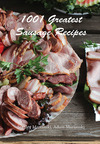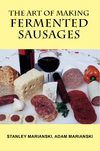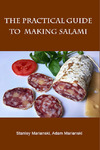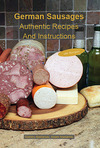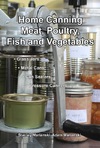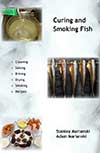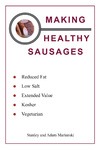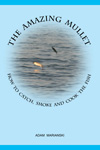Meats and Sausages
Tongue Head Cheese (Salceson ozorkowy)
| Meats | Metric | US |
|---|---|---|
| pork or veal tongues | 350 g | 0.77 lb. |
| skinless pork jowls | 400 g | 0.88 lb. |
| pork skins | 50 g | 0.11 lb. |
| pork liver | 100 g | 0.22 lb. |
| blood | 100 g | 0.22 lb. |
Ingredients per 1000g (1 kg) of meat
| salt | 18 g | 3 tsp. |
| Cure # 1 | 1.0 g | 1/5 tsp. |
| pepper | 4.0 g | 2 tsp. |
| marjoram | 4.0 g | 2 tsp. |
| garlic | 3.5 g | 1 clove |
| cloves, ground | 2.0 g | 1 tsp. |
Instructions
- Blanch tongues with hot water and remove the skin.
- Cut tongues into 1-1¾” (25-40 mm) cubes. Mix thoroughly with 1.0 g (1/5 tsp.) Cure #1, place in container, cover with a cloth and place in a refrigerator for 72 hours. You may skip this curing step but the tongues in your head cheese would be of a gray color instead of vivid pink.
- Except liver, poach other meats in water until soft:
-
- tongues at 185º F (85º C).
-
- skins at 203º F, (95º C).
-
- jowls at 185º F (85º C).
- Cut boiled skinless dewlap into 5 mm (¼”) cubes. Dice or cut boiled pork or veal tongues into 4 cm (1¾”) cubes (They were previously cut for curing, if this step was employed). Grind boiled skins through 2-3 mm plate. Grind raw pork liver through 2-3 mm plate.
- Add salt and spices to cut and ground meats and mix thoroughly with blood.
- Stuff into middles or bladders loosely and sew the ends with twine. You may use large diameter waterproof casings.
- Poach at 82°C (180°F) for 90-120 min (depending on size) until the internal temperature of the meat reaches 68-70°C (154-158°F). Remove air with a needle from pieces that swim up to the surface.
- Spread head cheeses on a flat surface at 2-6°C (35-43°F) and let the steam out. Then flatten them with weight and cool them to below 6°C (43°F).
- After cooling clean head cheeses of any fat and aspic that accumulated on the surface, even them out and cut off excess twine.
- Store in refrigerator.




